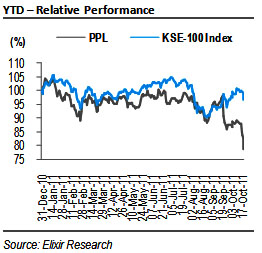 Many eminent contemporaries were ready to side with him in private, but refused to confront Eddington publicly. Disillusioned, Chandra lost interest in pursuing his theory, and in 1937 moved to the US.
Many eminent contemporaries were ready to side with him in private, but refused to confront Eddington publicly. Disillusioned, Chandra lost interest in pursuing his theory, and in 1937 moved to the US.
Yesterday (October 18) was the 101st anniversary of his birth, in Lahore. He is one of only four Indian scientists to be awarded the Nobel Prize (his uncle, C V Raman being the first) though by then he was long an American citizen. NASA’s premier orbiting Space X-Ray Telescope is named in his honour. He was the distinguished author of many books and research papers, and a lifelong dedicated teacher who was both a Fellow of Trinity College, Cambridge and an Emeritus Professor at the University of Chicago. Who am I talking about?
I wonder how many of our Physics graduates (let alone the educated readers of this newspaper) will be able to answer my question with any confidence. But my personal lifelong interest in the subject makes it entirely appropriate for me to fondly remember today a man who I have long admired for both his scientific achievement and his human qualities. I refer to none other than Subrahmanyan Chandrasekhar, universally and affectionately known by one and all as simply ‘Chandra’.
It is not my intention to offer you a potted biography. Many good ones are available if you are interested. Instead, I plan to briefly discuss the fundamental importance of the major work for which he is best known, and how and why that work was largely considered a mere scientific curiosity until many years later, when it won due recognition. As you will see, it makes for an interesting story for many reasons.The first half of the last century was the golden age of physics.
A revolution in ideas was in progress, and a host of brilliant men were engaged in exciting discoveries and theoretical speculations that dramatically altered our thinking about the universe in which we live. One such man was Sir Arthur Eddington, Master of Trinity College, Cambridge, the pre-eminent British scientific personality of his time, but also an egotist not shy in promoting himself at every opportunity. He had shot to fame as the leader of the scientific expedition to Africa in 1919, conducting some delicate experiments during a solar eclipse that served to confirm some key predictions of Einstein’s then new General Theory of Relativity.
One well known story (probably apocryphal) is typically Eddington: in an interview upon his return from the famous expedition, a journalist asked him in awe if he really was one of two persons in the world, apart from Professor Einstein, who fully understood the great man’s new theory. Eddington lapsed into a theatrical silence. Coming out of his reverie, he is supposed to have said, “Sorry, I was trying to think who that other person could possibly be.”Eddington’s masterly book, The Internal Constitution of Stars, was the authoritative textbook of the time on stellar formation and processes. Given the paucity at the time of experimental data and the absence of necessary theory (particularly Quantum Mechanics), it was a remarkable work.
He explained how stars were formed (by gravitational clumping of Hydrogen gas — the commonest and most elementary form of matter in the universe because it is composed of just one proton and one electron), and how thermal pressure acting outwards from the extremely hot core kept the star from collapsing under its own mass, to preserve a spherical shape. His theories also allowed the calculation of temperatures within stars (millions of degrees centigrade), their diameters, their luminosity, etc, etc.As Quantum Mechanics and Einstein’s theory of Gravitation took hold, a better understanding of the complex lifecycle of stars was rapidly forthcoming.
Without going into those full details here, it was worked out that some 80 percent of stars (including our own sun) would eventually end up (after billions of years) as what are technically known as ‘white dwarfs’ — a virtually cold, dark, and incredibly dense inert hulk, where the whole mass of the star finally collapses on itself under its own weight into a planet-sized dead star.
In 1930, at the age of 19, on his maiden sea voyage from India to England to take up a scholarship at Trinity College, Cambridge, Chandra immersed himself in the latest research on the subject. He was a child prodigy who, in Chennai, had already mastered more or less everything there was to know in Astrophysics at the time. (As an aside here, it is humbling to look back and remember how very little another promising student of Physics– me! — knew at that same age by comparison).
And, in a flash of inspiration, he carried out a calculation that seemed to show there had to be an upper limit to the mass of any star that would end its life as a ‘white dwarf’. The discovery of this cosmic restriction, now famously known as the ‘Chandra limit’ (about 1.4 times the mass of our sun) was Chandra’s finest hour, though it would be a long time for its importance to be recognised by the scientific community (for reasons that follow).
Upon arrival in Cambridge he discussed his startling conclusion with his seniors. Most were supportive, Eddington was not (it clashed with his own theories). In the next three years Chandra checked and re-checked his theory and by early 1935 was ready with a paper he formally delivered as a lecture to the Royal Astronomical Society. He finished with the prophetic pronouncement that “the more massive stars cannot end their lives as white dwarfs, and one is left speculating on what those other possibilities may be”.
Eddington spoke next. In deliberately acerbic language he dismissed Chandra’s paper as nonsense and subjected the young Indian to public ridicule in front of his peers. Chandra, a sensitive young man, still insecure of his scientific worth amongst the titans, suffered a humiliation from which he never recovered. Especially as many eminent contemporaries were ready to side with him in private, but refused to confront Eddington publicly. Was there racism at work here? Disillusioned, Chandra lost interest in pursuing his theory, and in 1937 moved to the US.
Nearly two decades later, with further theoretical advances and experimental evidence, the building of an H-bomb, and advances in Cosmology, the time was ripe for Astrophysicists to re-visit Chandra’s theory. For, the stars give off their huge energy by successively fusing Hydrogen atoms into Helium — the principle of the H-bomb — which in turn gets progressively converted to the heavier elements (the process stops at Iron). These nuclear processes in the core of the star produce sufficient pressure acting outwards to support the mass of the star, preventing it from collapsing upon itself.
But what happens when there is an imbalance between the two opposing forces? Back to what Chandra speculated in his final sentence, and might have gone on to discover decades earlier had he not become disillusioned. Today we know how massive stars die. Either they are overwhelmed by their own gravity and, as Einstein’s theory predicts, become even denser and smaller than ‘white dwarfs’, into what are known as Black Holes; or they explode in the most spectacular explosion known in the universe, called a Supernova.
And the debris from the supernova is spewed out into the universe and often ends up (again by gravitational clumping) as other stellar objects (such as our own Earth). In a real sense we are all ‘star-stuff’, for all the elements originate in the fiery crucible of the stars.Chandra was vindicated, and had earned his Nobel Prize. – Dailytimes – Munir Attaullah













